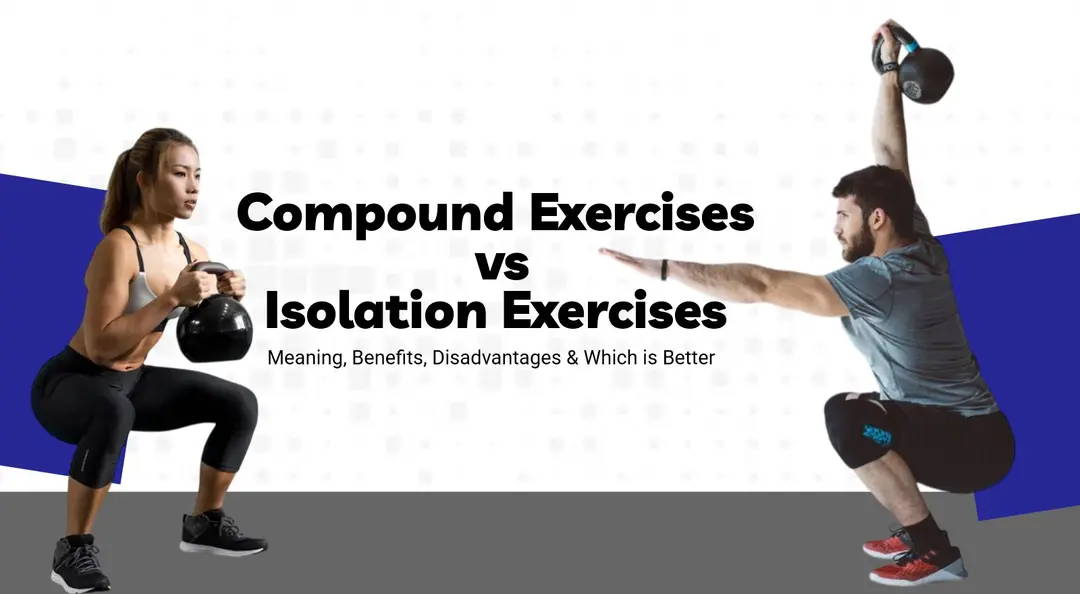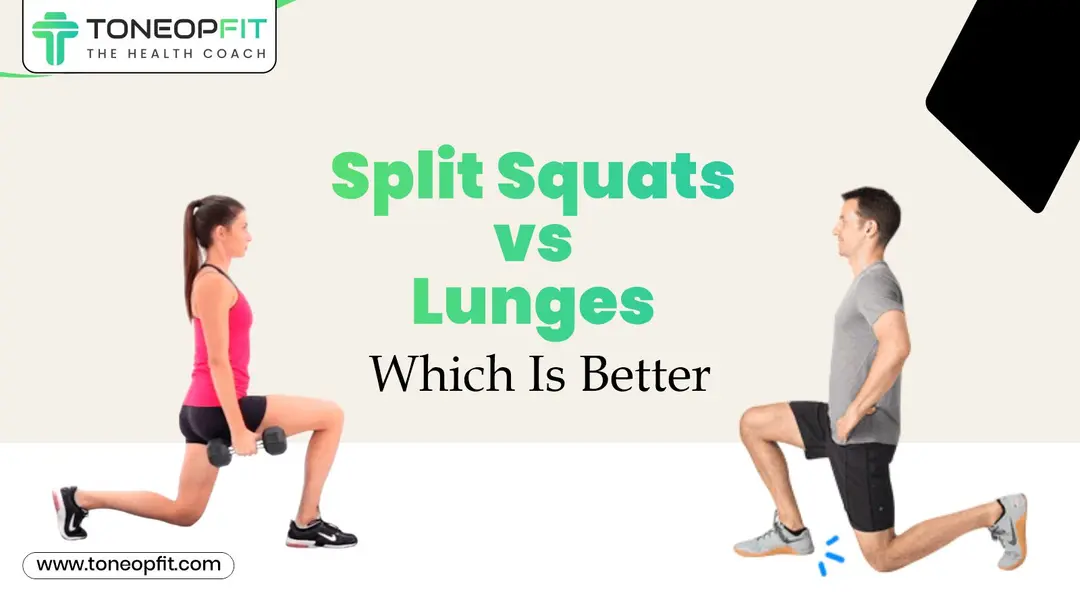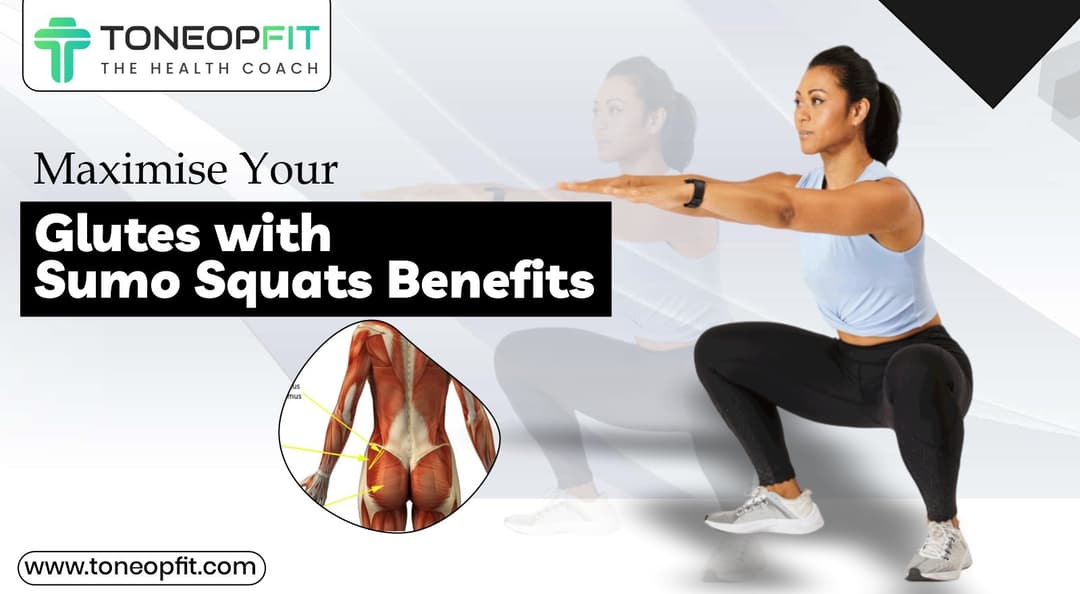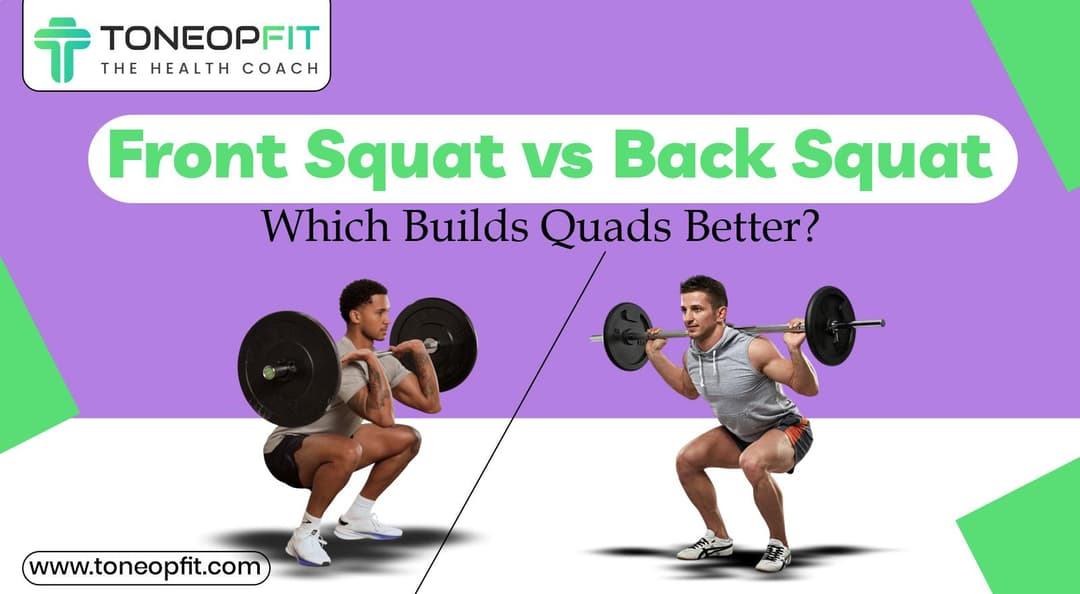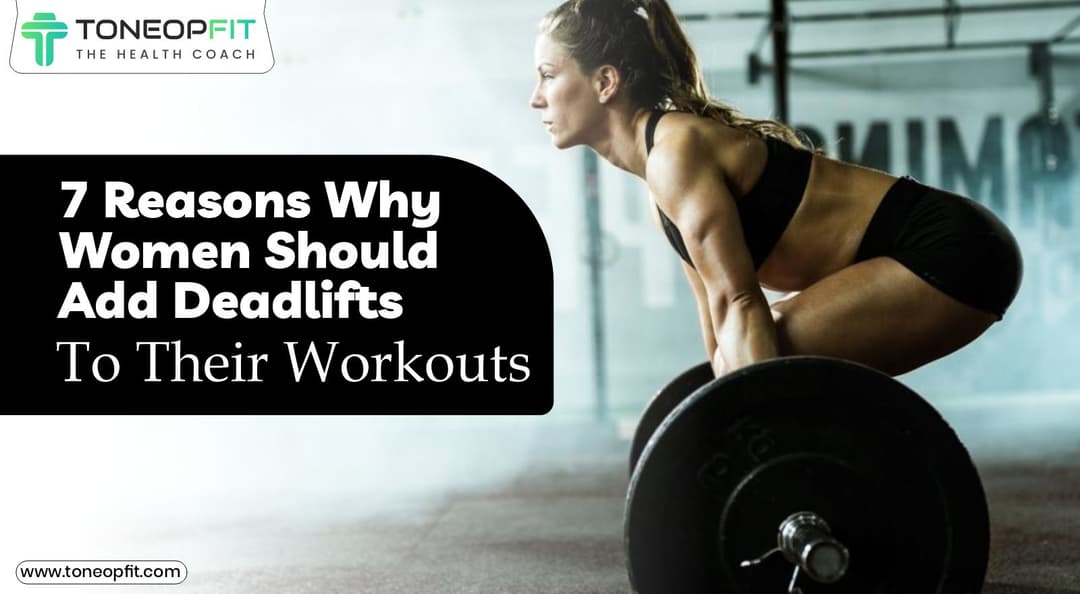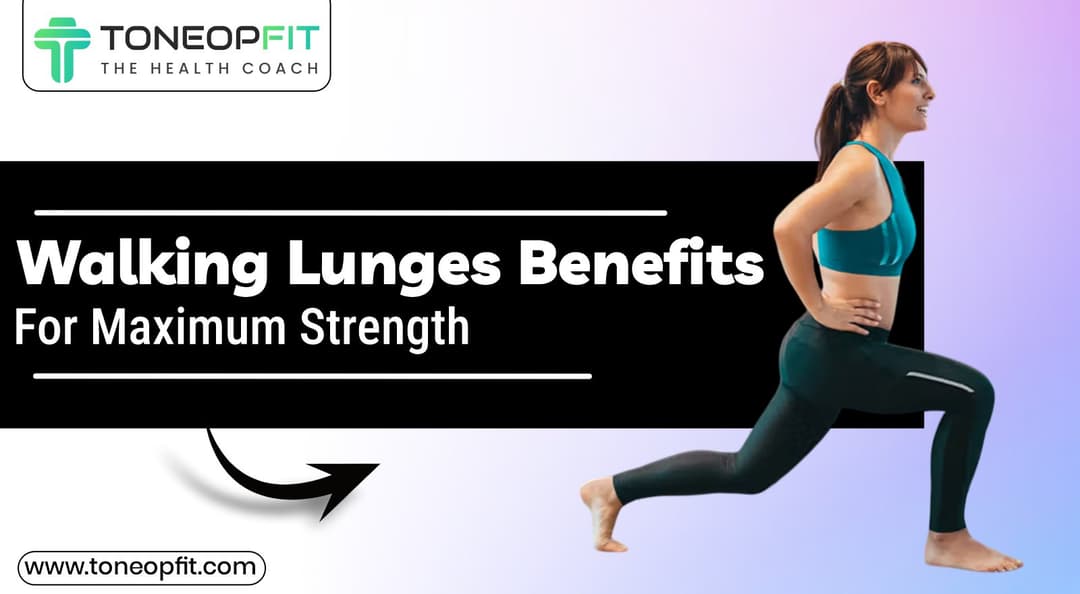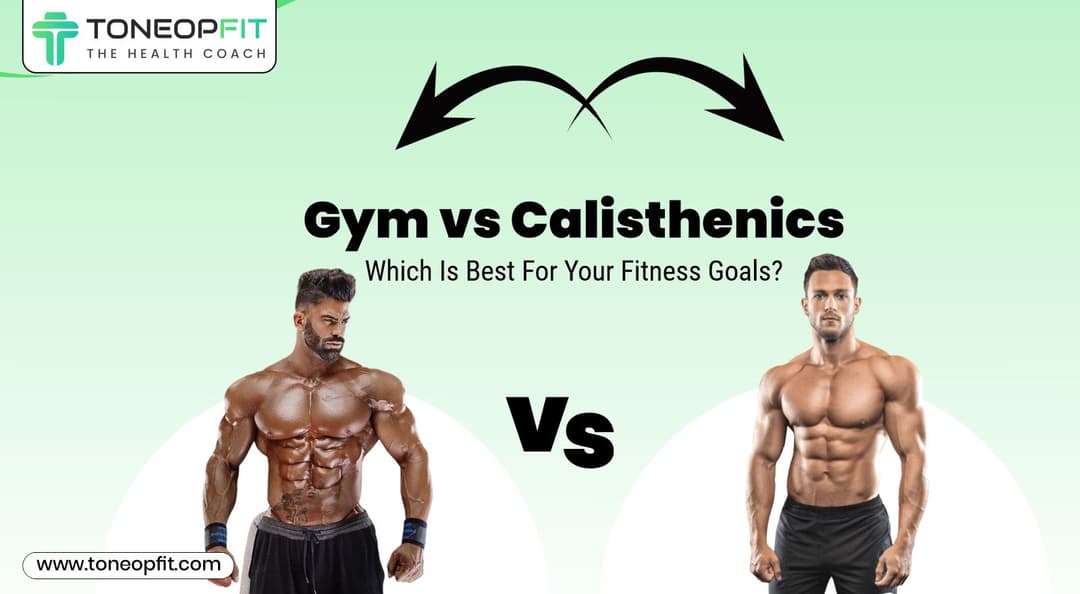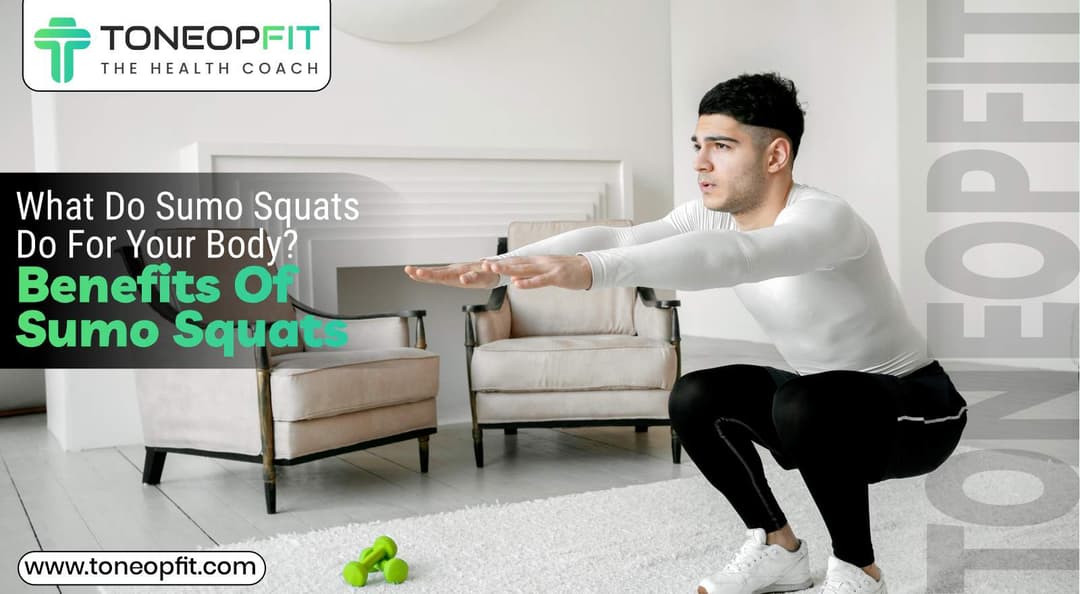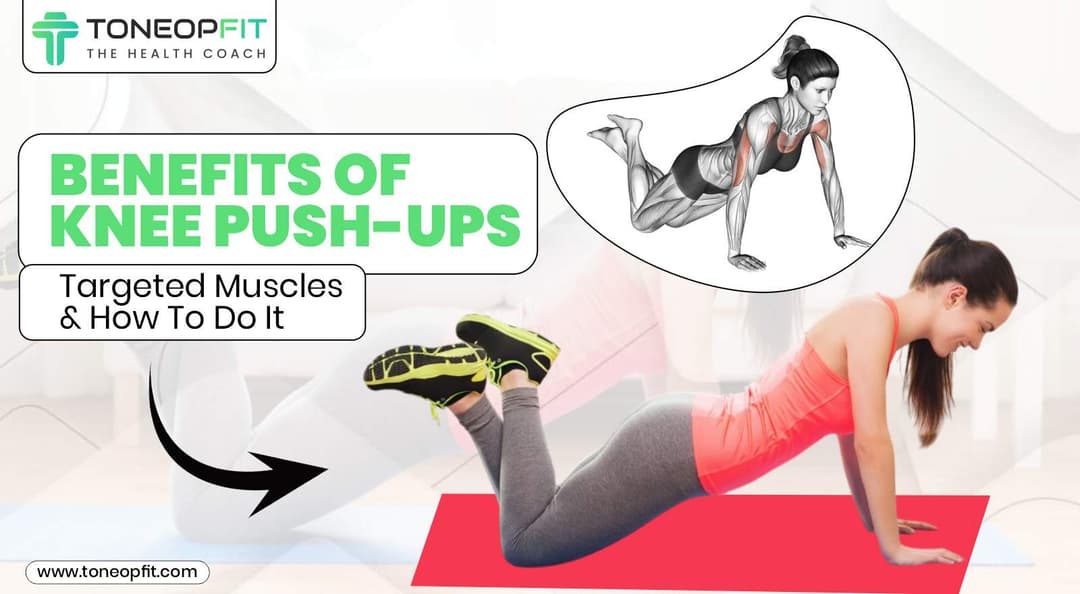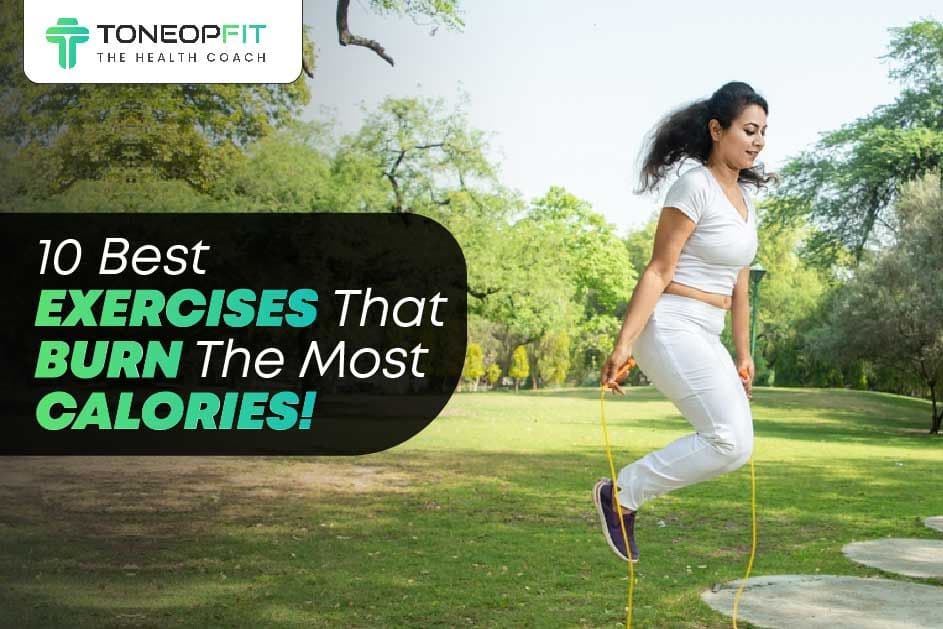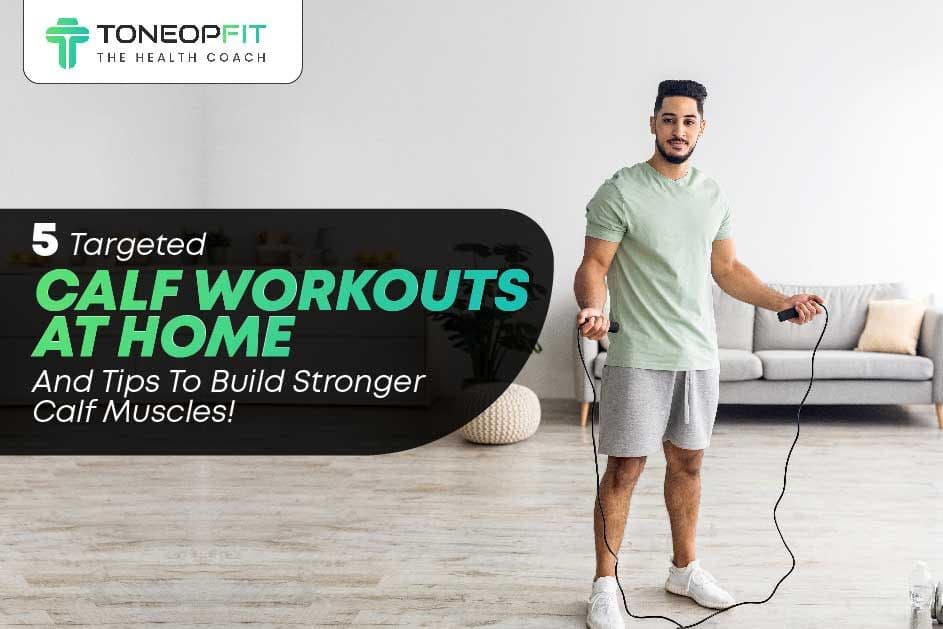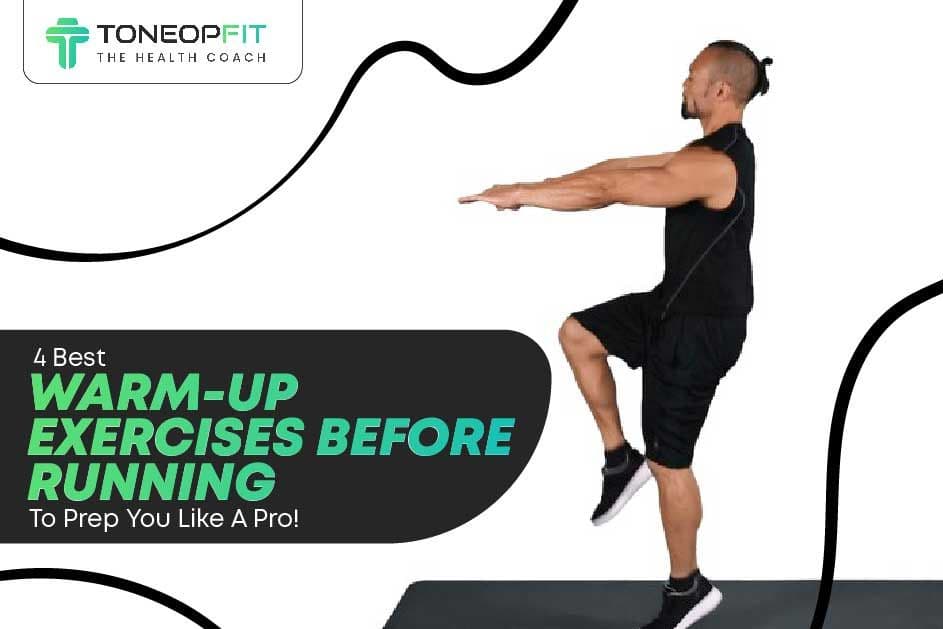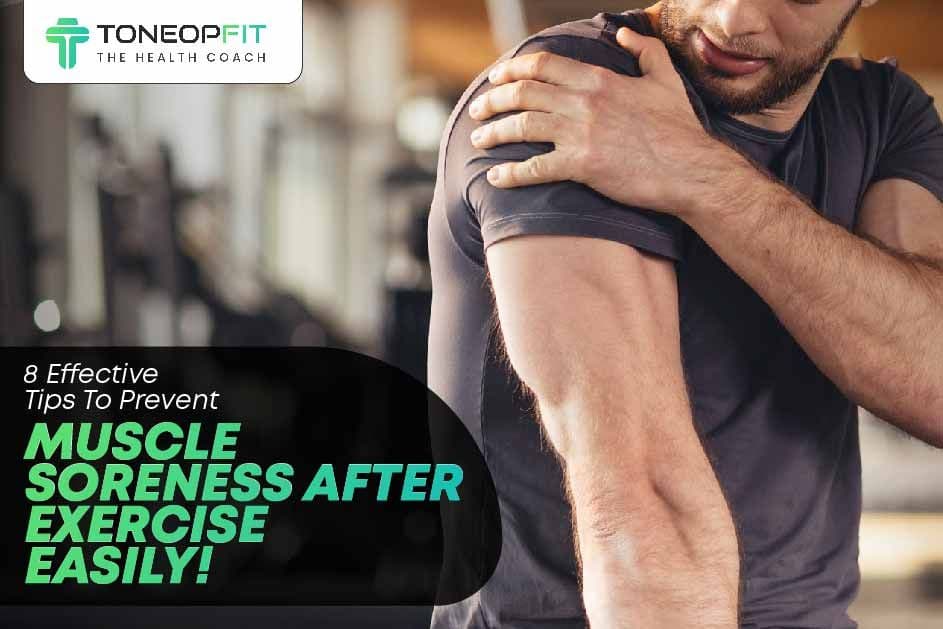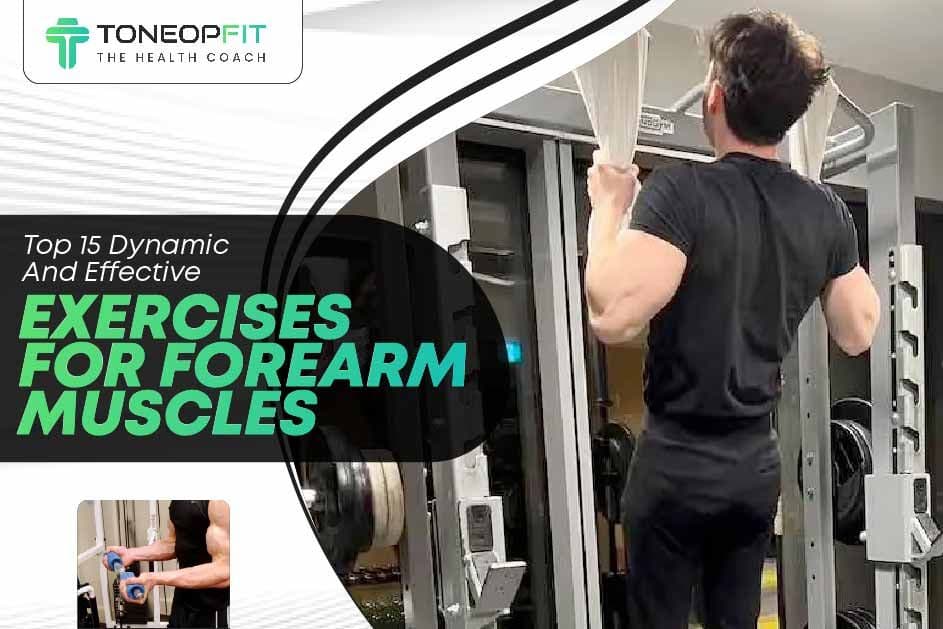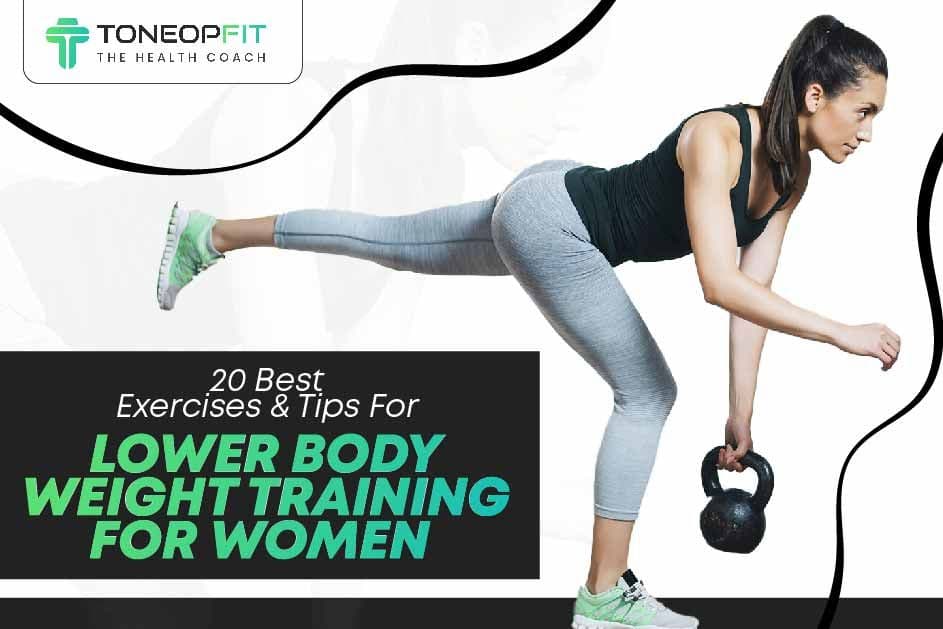Are you tired of the selections between gym workouts and sports training? Need help with which approach will help you achieve your fitness goals? Do you yearn for a well-rounded physique, or are you solely focused on muscle mass and definition? Many people struggle to distinguish between an "athletic body" and a "gym body" and often find themselves caught in the crossfire of conflicting fitness advice.
Athletes focus on performance-driven routines, prioritising strength, speed, endurance, and flexibility, whereas gym bodies are sculpted with aesthetics in mind, like muscle size and definition. This is why understanding one’s athletic body vs gym body can help align fitness goals with the right training approach.
But how do you find a balance between the two? This blog discusses the key differences between athletic body vs gym body, explore the specific training and dietary tips required to achieve each, and ultimately empower you to make informed fitness decisions. So, let’s get started!
Table Of Contents
1. What Is The Difference Between An Athletic Body And A Gym Body? 7 Differences
2. How To Build Athletic Body VS Gym Body? 7 Tips
3. The Final Say
4. FAQs
5. References
What Is The Difference Between An Athletic Body And A Gym Body? 7 Differences

The distinction between an athletic body and a gym body is often seen in their specific focus training areas and physical outcomes. Note these differences across various aspects, whether it’s performance and agility or muscle growth and aesthetics:
1. Athletic Body VS Gym Body Focus Areas
The primary difference between athletic and gym bodies lies in their training goals and the specific focus areas that define their purpose and functionality.
- Athletic Body
The focus of an athletic body is achieving optimal performance for specific sports or physical activities. Training is tailored to develop strength, speed, endurance, agility, and coordination. Functional movements like sprints jumps, or sport-specific drills are emphasised to improve physical abilities. The primary goal is efficiency and adaptability rather than appearance, ensuring performance under competitive conditions.
- Gym Body
These are built with aesthetics in mind, prioritising muscle growth, symmetry, and definition. Training routines revolve around effective muscle toning workouts, weightlifting, resistance exercises, and isolating muscle groups to create a sculpted appearance. While functional strength might be an outcome, the primary goal is having a visually appealing physique with pronounced muscles and minimal fat.
To help your bones stay strong, you can take Bone 360 Tablets by ToneOp Care, which have a mix of nutrients like calcium, magnesium, vitamin D, zinc, and alfalfa. These nutrients can help strengthen your bones and muscles, reduce joint pain, and improve bone density and flexibility.
2. Athletic Body VS Gym Body Build Type
Functional needs determine the build of an athletic body, while a gym body is sculpted to maximise muscle size or ideal muscle mass percentage and visual appeal.
- Athletic Body
Athletic bodies tend to have a lean, well-balanced build, with muscles proportionate to enhance functional movement. The physique varies based on the sport; for example, swimmers develop broader shoulders, while sprinters have strong legs. The goal is a physique that supports speed, stamina, and agility without excess bulk that may hinder performance.
- Gym Body
Gym bodies, especially those achieved through bodybuilding, are bulkier and more muscular. They often have a “V-taper” shape with broad shoulders, defined arms, and a smaller waist. Muscle size and definition are highly pronounced, sometimes at the expense of overall balance or mobility.
3. Athletic Body VS Gym Body Muscle Composition
The composition of muscles in athletic and gym bodies highlights the contrast between functionality and size-driven aesthetics.
- Athletic Body
Muscle composition in athletes is balanced between fast-twitch and slow-twitch fibres. This balance ensures explosive power for quick movements and sustained endurance for prolonged physical activity. Functional or strength training exercises develop muscles that are efficient, durable, and responsive to dynamic challenges.
- Gym Body
The muscle composition of a gym body is dominated by hypertrophy-focused training, targeting fast-twitch fibres for increased size and strength. This creates larger, denser muscles that look impressive but may not offer the same functional balance as those developed in athletic training.
4. Athletic Body VS Gym Body Body Fat Percentage
Body fat percentage varies significantly between athletic and gym bodies due to differing priorities in performance and aesthetics.
- Athletic Body
Athletic bodies typically maintain a moderate or ideal body fat percentage to support energy and performance. Athletes need sufficient fat reserves for endurance and recovery, keeping their levels between 10% and 20%, depending on their sport and position.
- Gym Body
Gym bodies, especially those aimed at bodybuilding, strive for extremely low body fat percentages to highlight muscle definition. During competition phases, levels can drop to 5-10%, though maintaining this level long-term can impact energy levels and health.
For personalised workout routines that can complement your caffeine metabolism, consider ToneOp Fit's Home Workout Plan. Choose from bodyweight exercises, HIIT workouts for a quick sweat session, or targeted strength training to build muscle and accelerate metabolism.
5. Athletic Body VS Gym Body Flexibility
Flexibility varies in athletic and gym-focused training, reflecting their respective goals.
- Athletic Body
Flexibility is a main component of athletic bodies, reducing sudden injuries and enhancing performance. Regular stretching, guided yoga, and mobility drills are integrated into training to maintain a wide range of motion, particularly for gymnastics or martial arts.
- Gym Body
Flexibility is often secondary in gym-focused training. Unless specifically included, heavy lifting can lead to tighter muscles and a reduced range of motion. While some gym-goers practice stretching or dynamic warm-ups, it is not a primary focus.
Try ToneOp Fit's 1-Year Transformation Plan, which offers a holistic approach to wellness. Combining a Sattvic diet, natural therapies, and mind-body wellness techniques, the program addresses internal and external factors contributing to hair loss. Stress-busting and ancient yogic practices will help awaken your body's natural detoxification and weight management systems. The program also includes herbal massages to promote circulation, reduce inflammation, and enhance relaxation.
6. Athletic Body VS Gym Body Training Intensity
Training intensity reflects the differing priorities of athletes and gym-goers, balancing sport-specific performance and muscle development.
- Athletic Body
Athletes train at high intensity, often blending cardio, strength, and sport-specific drills. Training sessions vary in focus, combining endurance runs, best high-intensity workouts, plyometrics, and agility exercises. The goal is comprehensive development, allowing the body to adapt to diverse physical demands.
- Gym Body
Gym training intensity revolves around heavy lifting, often isolating specific muscle groups per session. Workouts are designed for progressive overload, ensuring muscles grow in size and strength. Rest and recovery are carefully calculated to maximise hypertrophy.
7. Athletic Body VS Gym Body Diet Needs
Dietary requirements differ significantly between athletic and gym bodies, reflecting their unique energy, recovery, and muscle growth needs.
- Athletic Body
Athletes require healthier food swaps or a diet of carbohydrates for energy, moderate protein for muscle repair, and healthy fats for recovery. Nutrient timing plays a significant role, with pre-and post-workout meals optimised to enhance performance and recovery. Hydration and electrolyte balance are equally prioritised.
- Gym Body
Gym bodies often follow protein-heavy diets to support muscle growth. Caloric intake is meticulously adjusted based on goals—higher for bulking and lower for cutting phases. Supplements like whey protein, creatine, and amino acids are frequently used to enhance muscle repair and growth.
Try ToneOp Fit's comprehensive Diet+Fitness Weight Loss Plan, which offers the best of both worlds: delicious, easy-to-follow recipes and engaging live workout sessions. You'll achieve your goals and feel your best with personalised guidance from a dedicated fitness coach. Enjoy the convenience of home workouts, a vast library of pre-recorded videos, and 24/7 support.
Also Read: Home Workout Vs Gym Workout: Which Is Better
How To Build Athletic Body VS Gym Body? 7 Tips
Building an athletic body is different from building a gym body. While both involve exercise and diet, the focus and approach differ. Let’s explore seven critical tips for building an athletic body, focusing on developing a well-rounded physique with a focus on performance:
Tip To Build | Athletic Body | Gym Body |
Prioritise Compound Movements | Compound movement exercises, such as twisted squats, deadlifts, bench presses, and pull-ups, work multiple muscles simultaneously and build athleticism. | Focus on isolation exercises targeting specific bicep curls, tricep extensions, and leg extensions. |
Try High-Intensity Interval Training | HIIT workouts involve short bursts of intense workouts followed by some rest periods. These improve cardiovascular fitness, burn calories, and enhance athletic performance. | Steady-state cardio is like running on a treadmill or cycling moderately for extended periods. |
Focus on Functional Fitness | Functional exercises mimic real-life movements, improving coordination, balance, and agility. Examples include kettlebell swings, box jumps, and medicine ball slams. | Traditional weightlifting exercises focus on building muscle mass and strength. |
Prioritise Plyometrics | Plyometric exercises involve explosive movements, like jumping and bounding, which develop power and speed. | There is less emphasis on plyometrics, focusing more on slower, controlled movements. |
Train for Power and Speed | Try exercises that generate maximum force in minimal time, like Olympic lifts (clean and jerk, snatch) and sprint training. | Focus on building strength and endurance through heavier weights and lower repetitions. |
Don't Neglect Flexibility Plus Mobility | Regular stretching and mobility work improves motion, reduces injury, plus enhances athletic performance. | Flexibility and mobility are essential for maintaining good posture and preventing injuries. |
Fuel Your Body System Right | A balanced protein, carbohydrates, and healthy fat diet give energy for athletic performance. | A diet focused on building muscle mass often requires higher protein intake and calorie surplus. |
Also Read: 8 Ways To Amp Up Fitness Motivation And Tips
The Final Say
Ultimately, the athletic body vs gym body both require dedication and hard work, and their training and dietary approaches diverge. An athletic body prioritises functional strength, agility, and endurance, aiming for a lean, toned physique. Meanwhile, a gym body emphasises muscle mass and definition. Whether you strive for peak athletic performance or aesthetic appeal, a balanced combination of both training styles gives a well-rounded physique. So, adjust your routine for the athletic body vs the gym body, and enjoy the journey towards your fitness goals.
FAQs
1. Which is better: sports or gym?
The superior choice between the gym and sports depends on your specific goals. For optimal athletic performance, a well-rounded sports training program is ideal. However, if building muscle mass and definition is your primary aim, gym workouts might be more suitable. The best approach combines a balanced physique that prioritises strength, endurance, and aesthetics.
2. What is the difference between an athletic and a muscular body type?
Athletic and muscular body types differ in their primary focus. An athletic physique emphasises functional strength, agility, and endurance, resulting in a lean, toned appearance. Conversely, a muscular physique prioritises maximising muscle size and definition. While both require dedication, their training and nutritional approaches diverge.
3. How does the diet for an athletic body differ from a bodybuilder's diet?
An athletic diet centres around foods to fuel performance and recovery. It involves a balanced intake of carbohydrates, proteins, and healthy fats. Meanwhile, bodybuilders often adhere to more restrictive diets with precise macronutrient ratios for muscle growth. Techniques like carb cycling and strategic calorie intake are common in their approach.
4. How do you target muscles differently for an athletic body vs. a gym body?
To build an athletic physique, prioritise compound exercises that engage multiple muscles. Try plyometrics, agility drills, and resistance training with moderate weights and higher repetitions. For a gym body, focus on isolation exercises to target specific muscles. Employ heavier weights and lower repetitions to stimulate muscle growth.
References
- https://www.fitpaa.com/blog/what-is-the-difference-between-a-bodybuilders-physique-and-an-athletic-body/#:~:text=Bodybuilders%20aim%20for%20extreme%20muscle,performance%20in%20their%20respective%20sports.
- https://blog.nasm.org/fitness/body-types-how-to-train-diet-for-your-body-type
- https://www.stack.com/a/athlete-v-s-bodybuilding/
- https://healthyhabbits.org/index.php/blog/
About ToneOp Fit
ToneOp Fit is a platform dedicated to improving and maintaining good health through a comprehensive range of goal-oriented health plans with up to 3 Coach support. With a range of Weight Management, Medical Condition, Detox Plans, and Face Yoga Plans, the app also provides premium health trackers, recipes and health content. Get customised diet, fitness, naturopathy & yoga plans and transform yourself with ToneOp.













